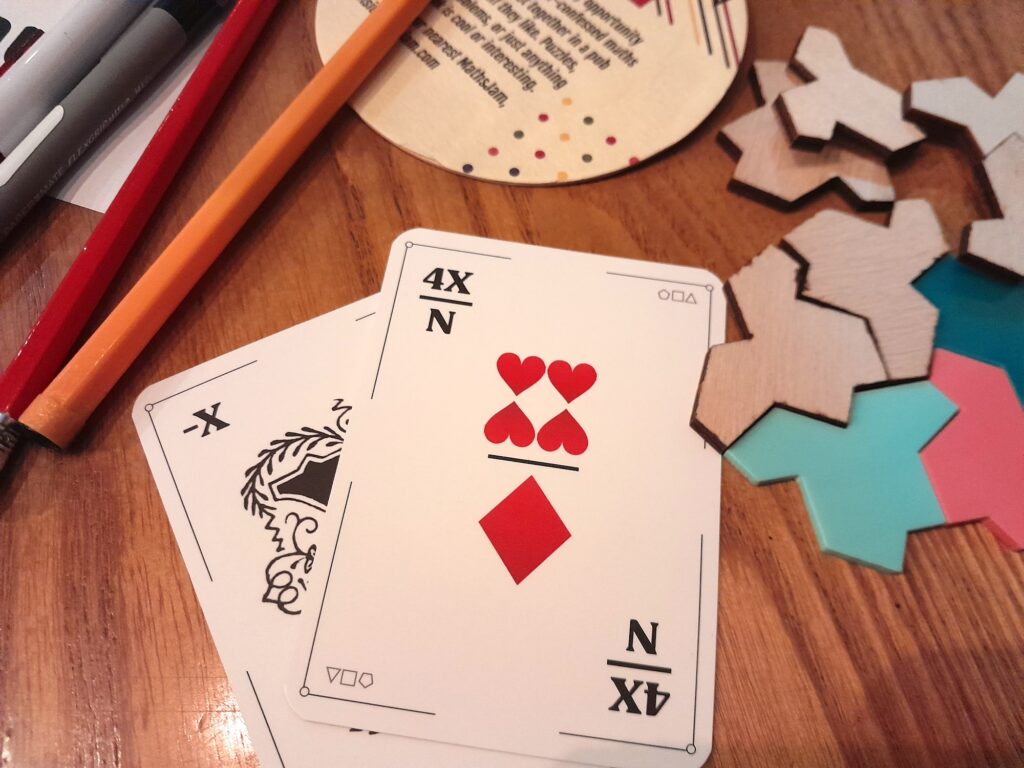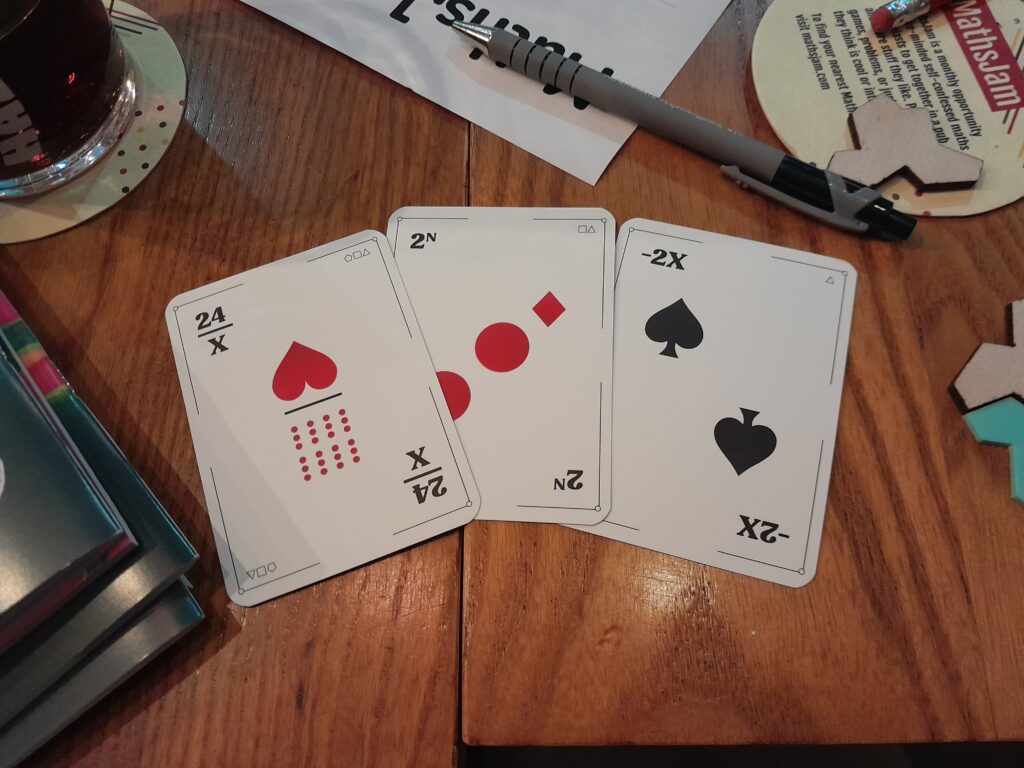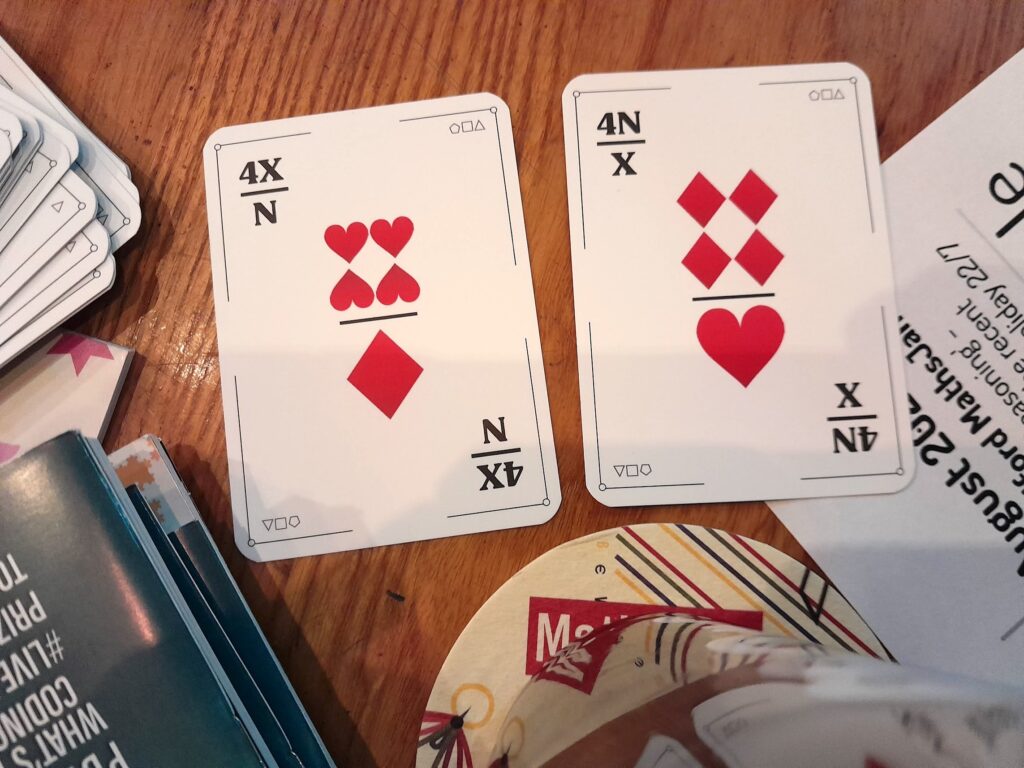
A while ago we announced a competition to win a copy of algebraic blackjack game 21X, which was recently successful on Kickstarter, smashing its funding target by an order of magnitude. If you’d like to pre-order a copy of the game, you can sign up to be notified when that’s possible.
We had over 30 entries in the competition, of which 20 achieved correct answers, and have picked a random set of winners to pass on to Naylor Games, who should be in touch with them by email in the next few days.
For anyone interested in seeing the answers, here’s what they were. As a reminder, the challenge here is to find a value for \(x\), given that \(n\) represents the number of cards, to get the total of all the card values closest to 21.
Question 1: \(-x\) and \(\frac{4x}{n}\)
Like many turns in the game of 21X, this one turns out to be not as difficult as it might initially look. Given that there are two cards and therefore \(n=2\), this resolved to simply \(2x – x = x\). So for this one, the correct answer is 21, which almost everyone got right!
Question 2: \(\frac{24}{x}, 2^n\) and \(-2x\)
The middle term here is just \(2^3 = 8\), so overall we have \(\frac{24}{x} + 8 – 2x\). Solving this for \(x\), it turns out \(x=-8\) will work here – possibly slowing down anyone who’d intuitively start with positive values for \(x\). Some entrants spotted that if you’re also prepared to take non-integer answers, you can use \(x=1.5\).
Question 3: \(\frac{4x}{n}\) and \(\frac{4n}{x}\)
This one was slightly trickier – it’s not possible to make exactly 21 with these cards, but there are two solutions for non-integer values of \(x\), around \(x=0.4\) and one around \(x=10.1\). The closest you can get to 21 with integer values of \(x\) is when \(x=10\), giving a value of 20.8. Exploiting the other root, one entrant spotted that using \(x=0.39588\) will get you a value as close as \(20.9999\) – although I’m not sure you could work that out in your head!


